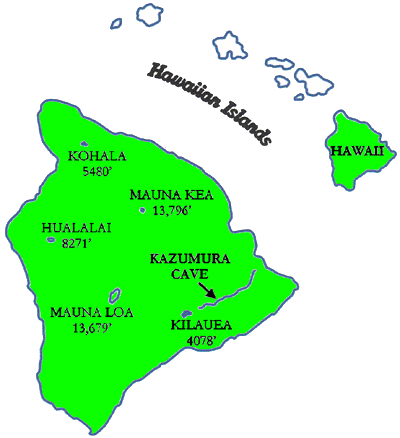CAVE FORMATION
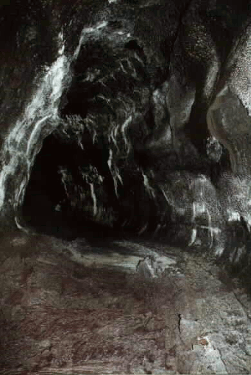
Kazumura Cave is a lava tube on the island of Hawaii. The cave formed between four and six centuries ago, when a vent on the east side of Kilauea Caldera erupted, sending lava down the northeast flank of the volcano. As these lava flows advanced, they cooled from the outside in. This produced a hard crust around the flow, which protected the lava from cooling too quickly. (Hawaiian lavas erupt at approximately 2165°F (1185°C). The air and ground temperature is therefore cold to lava.) In time, this protective crust thickened and confined the flow to an oval or rounded conduit referred to as a lava tube.
Lava tubes which are active for long periods of time, can be enlarged by lava flowing through the tube. Lava is a very abrasive fluid which can erode the surround rock. Given enough time and favorable conditions, this erosion can form canyons and lava falls. Erosion can also expose gaps in the existing bedrock. Lava injected into these gaps sometimes remains molten, and later drains back into the tube to form lava straws or runs.
If during an eruption, a hole develops in the ceiling of a lava tube, that hole is called a skylight. Skylights allow heat to escape while admitting cold air. Any time the lava level in the tube drops, cold air entering a skylight can chill the surface of the flow causing a second crust to form. This produces what is known as a tube in tube. Cold air can also crack hot rock, allowing sections of the tube walls and ceiling to collapse, producing breakdown.
A dropping lava level also allows lava sticking to the ceiling to sag and form lavacicles, (a feature similar in appearance to a stalactite). As the lava level drops further, the tube begins to drain and cool. The last bit of lava flowing over a fall has cooled to a putty like consistency and begins to pile up on itself. This forms an irregular column called a dribble spire. At the base of a fall, a thick crust forms on the plunge pool surface, and then sags as lava drains from beneath. The last tubes in tube, also begin to collapse without lava to support their weight.
It can take years for a lava tube to cool sufficiently to support life. As many cave creatures are dependant upon plants for their food, it is likely the cave is not fully colonized until after these plants have become established on the surface above.
Kazumura Cave is just one of several lava tubes that formed in that eruption, but it is by far the most important. As the worlds longest known continuous lava tube, Kazumura is a national treasure that is virtually unknown to all. Geologically speaking, Kazumura has been called a master lava tube. Nearly every type of feature found in a lava tube can be found in this cave.
So, if you’re planning a trip to the big island or already here, and would like to visit Kazumura Cave, call during business hours to schedule a tour.
(808) 967-7208
Monday - Saturday
8 AM - 6 PM (Hawaii Time)
Closed Sundays
CAVE FACTS
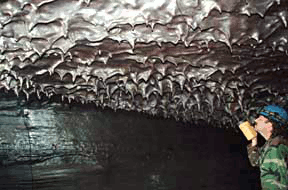
- KAZUMURA CAVE IS:
- the LONGEST CAVE in the state of HAWAII at 42.5 miles (68 km) surveyed.
- the LONGEST KNOWN CONTINUOUS LAVA TUBE in the WORLD.
- the 33RD LONGEST CAVE in the WORLD.
- the 7TH LONGEST CAVE in the UNITED STATES.
- the DEEPEST CAVE in the UNITED STATES at 3613 feet (1,101.5 m).
- part of the AILA`AU eruption. (A radio carbon dating estimate, places the eruption between 1410 -1470; however, oral Hawaiian accounts place the eruption two centuries later in the 1600’s.)
- OTHER INTERESTING FACTS -
- PASSAGE DIMENSIONS can be as much as 69 feet (21 m) wide, and 59 feet (18 m) high.
- The TALLEST LAVA FALL is 45 feet (13.7 m).
- The TEMPERATURE in the cave VARIES with ELEVATION.
- In volcano at approximately 3700 feet above sea level, the temperature is 59°F (15°C).
- In Hawaiian Paradise Park at approximately 90 feet above sea level, the temperature is 72°F (22.2°C).
- On it’s way to the ocean, the LAVA TEMPERATURE DROPPED 7.2°F or 4°C (basalt analysis).
- The ESTIMATED CAVE VOLUME is over 1.6 million cubic yards (over 1,220,000 m³).
- There are at least 101 known ENTRANCES to the cave.
TOURS AVAILABLE
- THREE TOURS ARE AVAILABLE:
- 1. Lava Falls $60 cash /person
- 2 hours Limit 6 2/3 mile Easy to moderate (Uneven floor, ladders)
- 2. Pit Room $120 cash /person
- 4 hours Limit 6 2 miles Moderate to challenging (Uneven floor, ladders, breakdown)
- 3. Maze (Experienced cavers/climbers only) $140 cash /adult
- 4-6 hours Limit 4 2 miles (Uneven floor, ladders, crawling over breakdown, ropes)

All tours begin with a short walk through the Puna Rain Forest before descending a ladder and entering the cave. Shortly after entering you will be shown delicate gypsum crystals, which can be damaged by a single drop of water. Moving on a little ways, the passage abruptly ends. Two more ladders must be descended to reach the main passage 20 feet below. At this point the Lava Falls and Pit Room tours head up slope. After a short introduction to some of the cave organisms, the group moves on to the Lava Falls, four of them, each with their own special features and ranging in height from 5 to 16 feet. Above the fourth Lava Fall is a room decorated with lavacicles, straws, dribble spires, and more. After seeing a few more features the Lava Falls tour turns around.
- The Pit Room
Tour continues on from here. On the way to the Pit Room you will see more decorated ceilings, ascend 2 lava cascades, and pass through the snake canyon; but be prepared to clamber over rubble. The highlight of the trip is a feature which is so intricate that it is hard to believe that it is made of rock. After seeing the sights at the pit room, the group turns around and heads back.
- The Maze Tour
After descending into the main passage, the Maze Tour heads down slope toward Eureka Falls and the Sexton Maze. On the way is Mongoose Falls. Here the group must climb down a 10 foot drop. Next comes Eureka Falls, which is 37 feet straight down. After checking out the drop it’s time to put on your gear and rappel down (single rope). Further down slope is Red Column Falls, here the tour turns around. The Sexton Maze is then entered by ascending a ladder. After crawling through the maze for about an hour, the group rappels back into the main passage, a 30 foot drop (double rope). It’s now time to ascend Eureka Falls and head back.
- EACH PERSON wishing to see the Maze must bring, and be proficient in the use of, the following vertical gear*.
- Caving or climbing helmet
- Headlamp and extra light / batteries as needed
- Climbing Harness
- Rappelling device suitable for a single or double rope.
- A working ascending system consisting of two ascenders or purssics, with foot loop(s), - per person.
- Carabiners (Two minimum)
- Gloves
- Knee pads and fore arm pads are recommended.
~~~~Ropes are provided! Gloves, heavily used knee pads, and modified construction hard hats are available for use if desired; but it is recommended that you bring your own.~~~~
*If you have no vertical skills or gear, but would like to visit the maze, check out our VERTICAL TRAINING course.
TOUR INFORMATION
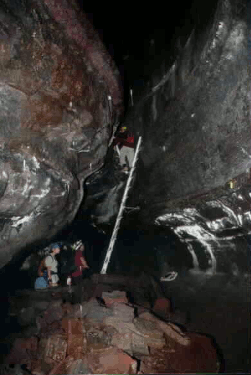
- All tours are by appointment only, so YOU MUST MAKE RESERVATIONS BY PHONE! It is recommended that you make RESERVATIONS as early as is practical. Book the MAZE TOUR at least ONE WEEK IN ADVANCE; and the VERTICAL TRAINING at least a MONTH IN ADVANCE.
- Tours are given Monday – Saturday, 9 am – 6 pm. We are closed Sundays.
- Tours start at $35 cash per person for school groups. (Two hour tour only.)
- Tours are in English only. All visitors must have a working knowledge of English to enter the cave. (Our top concern is cave preservation. We can’t protect the cave if visitors cannot understand and follow directions. No exceptions will be made!)
- WE PROVIDE – hardhats, gloves, and flashlights.
- YOU MUST WEAR - LONG PANTS and GOOD SHOES (hiking shoes recomended). Lava is sharp! Your legs and feet must be completely covered. (NO SLIPPERS, HIKING SANDALS, SHORTS or CAPRIS.) If you are not appropriately dressed you will be turned away!
- The cave temperature is 65°F (18.3°C) and drippy. Water drips all the time in places, more when it rains. You may need JACKET.
- Tours are limited to a maximum of six people for mixed groups, or seven people for a single group.
- Children visiting the cave must be at least 11 years of age, Well Behaved, and accompanied by a Supervising Adult. (2 hr. tour only) Parents should be aware that most children under 11 do not have the attention span necessary for this tour. The guide explains lava tube geology to visitors and the pace is leisurely.
- Must be a teenager for the 4 Hr. tour.
- Absolutely no kids on backs!
- No children on the Maze tour.
- The floor of the cave is uneven.
- Travel over breakdown is necessary on the Pit room and Maze tours.
- Visitors should arrive 15 minutes early. If you arrive late, you may find the group has left without you. OR, if your party fills the tour, you may not be able to see as much as you would like because your guide needs to get back for the next tour.
- Water is OK
- Photographs are allowed. Anything within the range of the flash should turn out to some extent.
OUR TOURS ARE NOT FOR EVERYONE
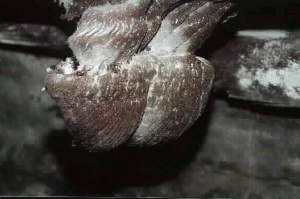
If you are: extremely claustrophobic, afraid of being underground, afraid of the dark, have a paralyzing fear of heights, afraid of ladders, or extremely uncomfortable about being locked in, you should avoid these tours.
- A cave is an enclosed underground cavity existing within solid rock.
- There are no natural light sources in the cave, only the lights we carry.
- To get on and off a ladder you must move to the edge of the drop.
- The cave entrance is gated and kept locked to protect the cave.
CAVE RULES
TO PRESERVE THE CAVE, ALL VISITORS ARE ASKED TO OBSERVE THESE RULES WHILE VISITING THE CAVE:- 1. Please Do Not Touch Anything! All lava formations are irreplaceable. Many are quite fragile. When a lava formation is damaged or broken, it is damaged or broken forever. It will NEVER grow back! Crystals found in Lava Tubes are also quite fragile so please do not touch anything.
- 2. Please Do Not Remove Anything From The Cave, so the cave can be preserved for future generations.
- 3. Please Do Not Eat In The Cave. Food left behind may begin to grow fungi or bacteria not normally found in the cave. Some such introduced organisms can be harmful to cave creatures.
LOCATION and TRAVEL TIMES
- 5 minutes from Akatsuka’s Orchid Garden,
- 20 minutes from Hawaii Volcanoes National park’s visitor center,
- 40 minutes from the Hilo airport,
- 1 hour from Punaluu black sand beach.
- 1 hour 20 minutes from the Mauna Kea visitor center,
- 2 – 2.5 hours from Kailua Kona, and
- 2.5 –3 hours from Waikoloa.
FOR RESERVATIONS CALL
(808) 967-7208
Monday - Saturday
8 AM - 6 PM (Hawaii Time)
Closed Sundays
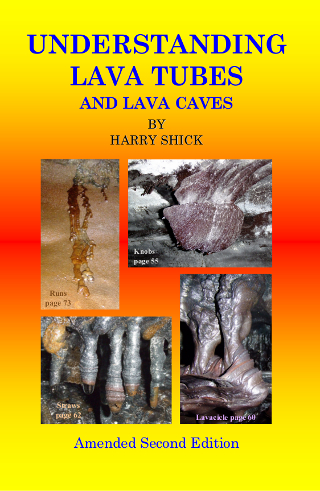
LEARN MORE ABOUT LAVA TUBES
One sentiment often expressed by visitors on cave tours is: I never imagined that a lava tube could be so interesting. The lava can take on so many different forms. It’s absolutely amazing.
Lava tubes do indeed possess an incredible diversity of features. As the guide at Kazumura, I try to show visitors as many features as possible and explain their formation.
After tours I would often hear: “You have given us so much information, I don’t think I can remember everything. Is there anyplace where all this information is written down?”
To this I would answer, “No, not that I’m aware of.”
After a while folks started saying: “You should write a book.
Because so many of you folks have considered me qualified for such an undertaking, I decided to take your advice. The book is titled “ UNDERSTANDING LAVA TUBES AND LAVA CAVES
The book covers the two methods of lava tube formation, and various erosional processes. It looks at how air can color the rock and help shape delicate cave features. There’s a chapter which looks at the various types of lava formations and explains how they form. The book also provides information about other types of lava caves, and their formation. In addition to this, practical information about lava tube caving, and preservation, is provided. And there is a question section, which I have used to provide information that did not easily fit in the text. (Book reviews / sales)
VERTICAL TRAINING ABOUT US CONTACT US BOOK SALES LAVA TUBE BOOK PHYSICS BOOK KAZUMURA CAVE PRESERVE
